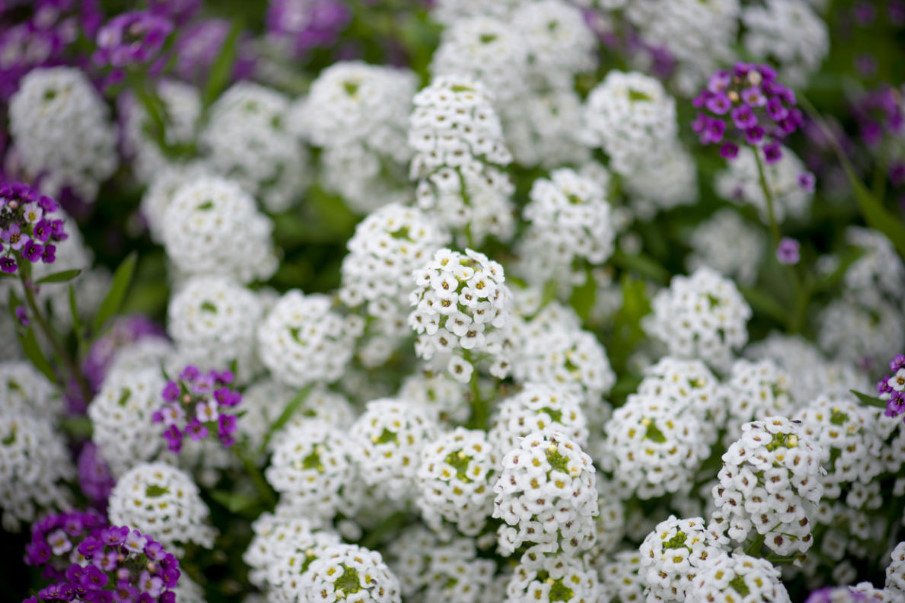
Once lobularia and alyssum belonged to the same genus, but later botanists have considered that these types of still an excellent, and separated them. To the genus lobulyaria began to include plants with flowers of white, purple and pink, and to the genus alyssum – with yellow or pale yellow flowers.
And another difference: the alyssum fruitlets have simple hairs, lobularia plant, covered with bipartite appressed hairs.
Botanical description
So, get acquainted with lobular. Of course, as well as alyssum, it belongs to the family Brassicaceae. After the division in kind lobularia there are only 5 species, native to the Mediterranean countries, on Islands and archipelagos of this region. Among them there are annual and perennial plants. All of them-low bushes from 8 to 40 cm in height, beginning to branch from the base of the stem. Leaves are small, narrow and pointed, have the next location. The whole plant appears grayish due to heavy pubescence.
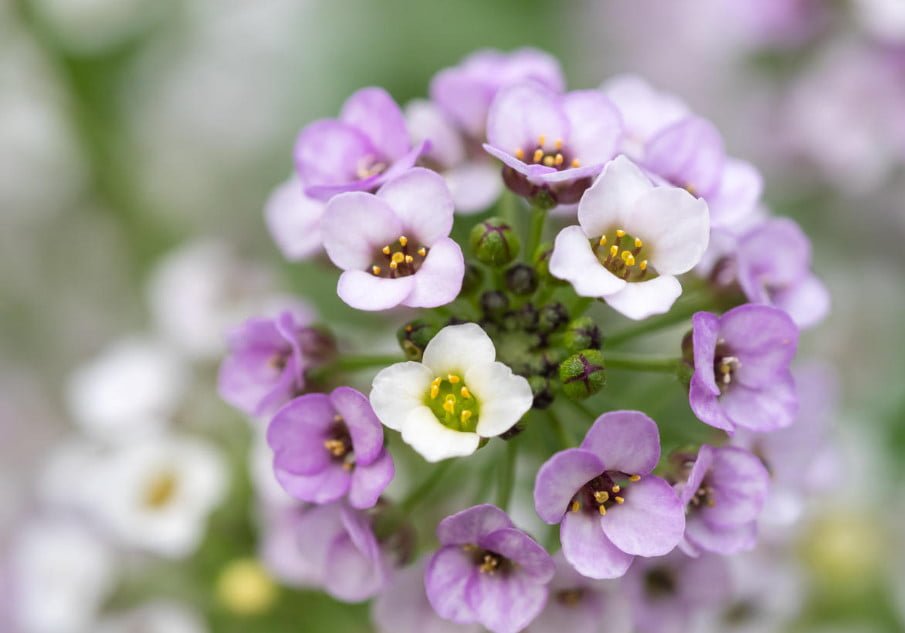
Small flowers — white or purple-are collected in inflorescences in the form of a brush. Flowers are characteristic of all cruciferous structure, have 4 petals, fruits-small pods. They gave the name to this genus: lobulus in Latin means pod.
Now consider some types lobularia.
Lobularia maritima
The most common species is Lobularia maritima. Native to the Azores and Canaries, where it grows on sand dunes, gravelly and ordinary soils.
This is a small annual plant, up to 30 cm tall, all branches are covered with slightly oblong pubescent leaves. Petals of small flowers (white, pink or light purple) form elongated inflorescences-brushes.
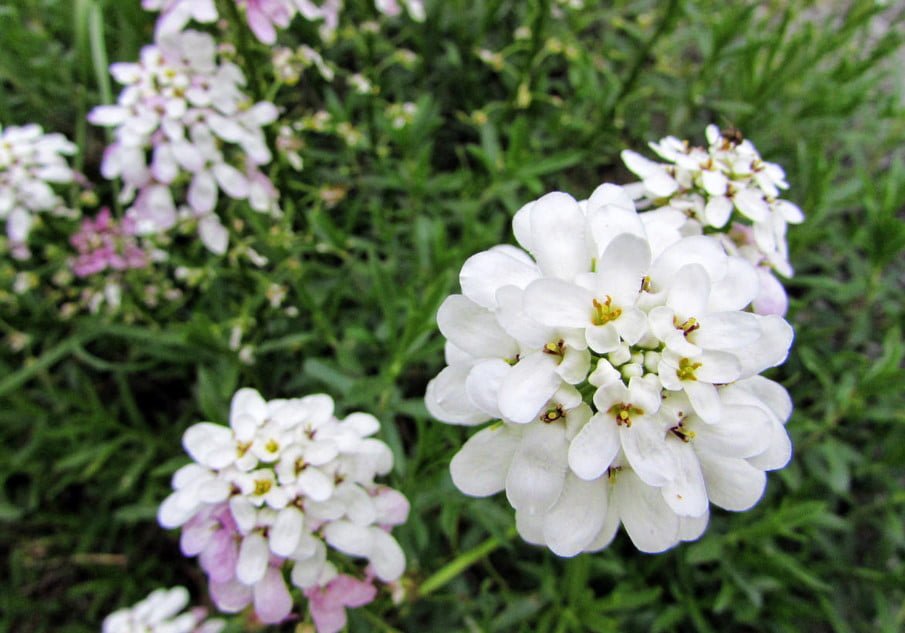
Blooms for a very long time, throughout the summer and until late autumn, produces a very pleasant honey aroma. After cutting is easily restored and continues to delight with their blooms. It has varieties and varieties, and they are widely used among gardeners.
Bentham Group
- Variety ‘Wise Risen’. Compact Bush up to 35 cm strewn with large white flowers.
- Variety ‘Schneesturm’. Smaller plant – up to 25 cm, flowers as in the previous class.
Group of compact varieties
- Variety ‘Violetkonigin’. Very small Bush height of 10-15 cm, forms a lot of branching shoots, flowers are purple.
- Variety ‘Carpet of Snow’. White, very fragrant flowers on the Bush 12-15 cm tall.
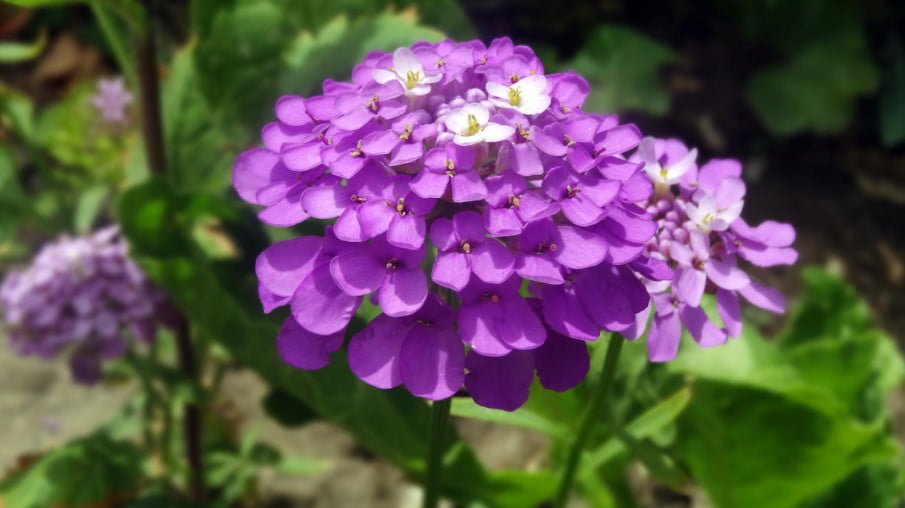
Group of open
- Variety ‘Schneeteppich’. Tiny Bush, only 8-10 cm in height. White flowers form shortened brush.
- Variety ‘Rosie O’day’. The baby is 8-10 cm tall, the flowers have a rich pink color.
- Variety ‘Kenigsteppih’. A small plant, all strewn with flowers purple-purple color.
Group of variegated
For low (up to 15 cm) plants are characterized by leaves with a border on the edge (yellowish or white) and medium-sized flowers of white or light purple color.
- Variety ‘Easter Deep Rose’. Most of the young variety, the plants are stunted, form clumps, entirely covered with bright pink flowers.
- Variety ‘New Apricot’. Inflorescences consist of flowers, the tips of which are painted in a very delicate pale apricot shade.
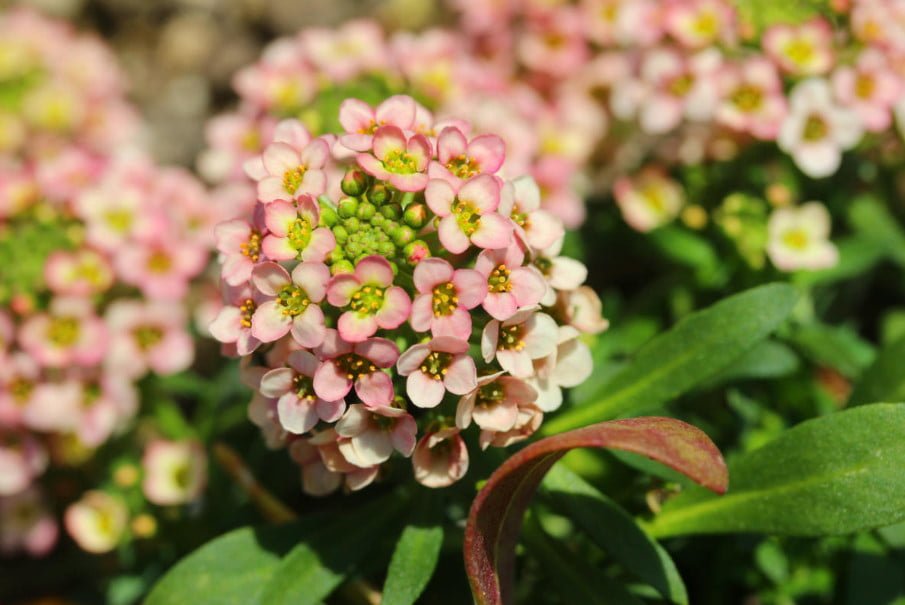
- Variety ‘Paletta’. This variety has a variety of colors of petals-different shades of pink and dense crimson, also there are lilac and even brown.
- Variety ‘Salmon’. Small bushes 10 cm in height, decorated with inflorescences fashionable salmon-pink color.
- Variety ‘Tiny Tim’. Just a dwarf (up to 8 cm) with creeping shoots, looks like a groundcover, all covered with dazzling white flowers.
Other types of lobular
Lobularia canariensis. A small shrub-perennial, endemic plant of the Canary Islands and Cape Verde archipelago.
Lobularia libyca. Annual height of not more than 40 cm with white flowers. This species is characterized by large fruits bearing 4-5 seeds.
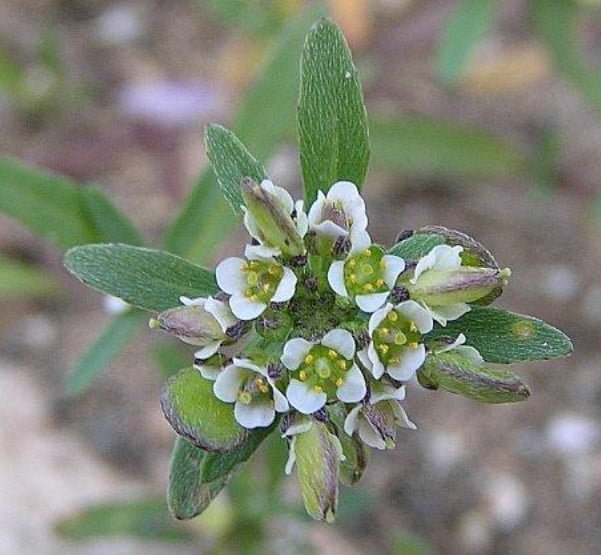
Growing of Lobularia maritima
Growing this plant is not difficult. It propagated by sowing seeds in the spring. To get an earlier flowering, sow better in the middle or end of March on seedlings.
Seedlings emerge quite quickly, in about 7-10 days. When the seedlings grow up a little, it is desirable to ungroup in a larger box or individual cups, then the plants for development will have enough space. Planting should be kept on a very bright Sunny window. Planting seedlings in the ground is made at the end of may.
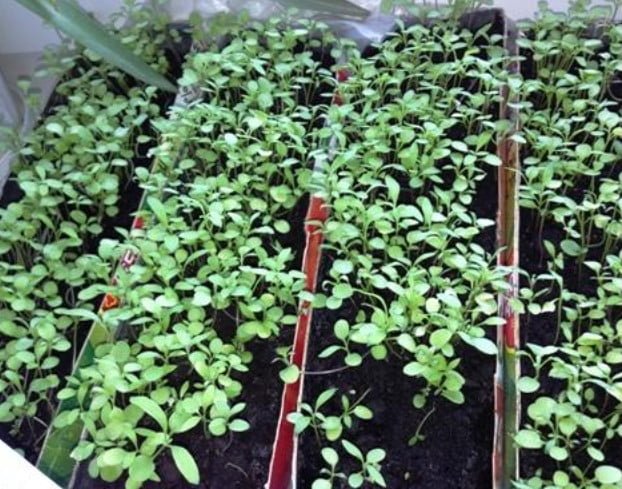
Place for lobularia should choose the sun, because this plant open spaces. To the soil it has low, ordinary garden soil is suitable. Young bushes are planted 20 cm from each other, then they will close, grow, and form a solid carpet or border. Thicken planting is not necessary, in this case, the flowering will not be abundant and beautiful. You can plant the seeds lobularia directly into soil as soon as soil, this flower is quite cold-resistant. After germination, seedlings or thinned, or planted the undergrown surplus on another flower bed. You can also sow plants in late autumn. In this case, the shoots will appear in early spring, and also begin flowering early.
Maintenance
Care lobular very simple: at first the necessary weeding and hoeing. Watering should be especially hot days, but remember that the plant does not tolerate stagnation of moisture, that is, it should not be over-poured. When flowering lasts for some time, and the bushes become untidy, pruning will help to rejuvenate the plants, and they will continue to bloom until late autumn. Even the first frost they are not afraid.
Lobularia in the Garden
This plant seems indispensable in the garden. It is used in a variety of ways. Probably, this is one of the best border annuals: along the path and along the edge of the flowerbed, white varieties will perfectly shade any flowers of the most diverse color.
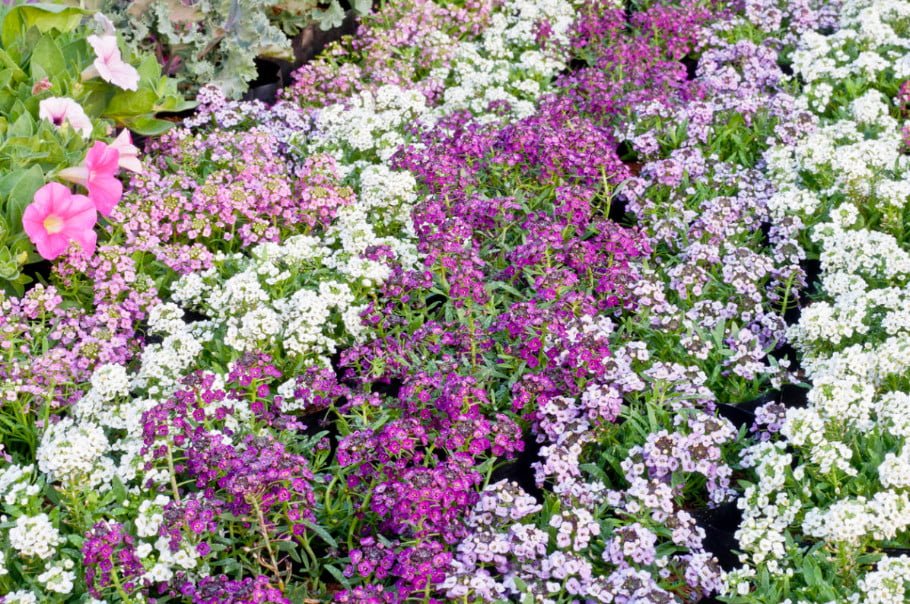
On the Alpine hill or rockery lobularia any colors will also look very organic. They are suitable for flowerpots and balcony boxes. And what is the odor of lobularia, especially on hot, Sunny days, attracting bees to collect the sweet nectar!
Grow lobularia in the garden, let it please you with its long flowering throughout the summer.


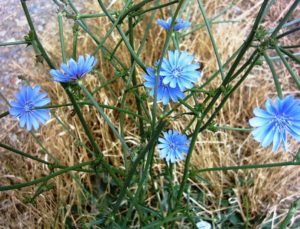

Leave a Reply